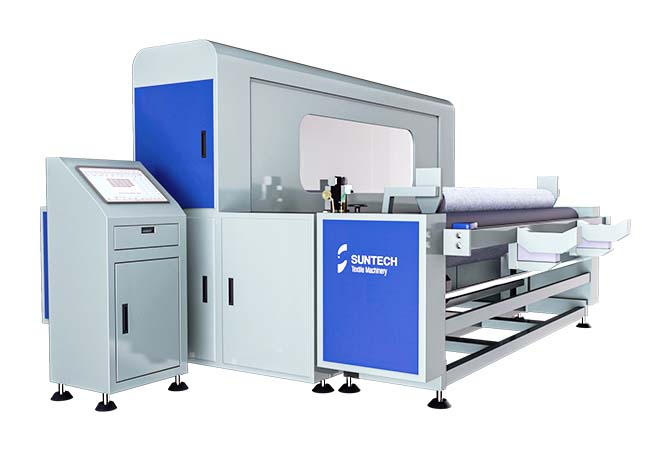Visual inspection defects detection technology is a powerful tool that combined cameras and computer algorithms to automatically inspect and detect fabric defects, which improves the quality of the products.
visual inspection defects Detection Technology in the Textile Industry
In the textile industry, visual inspection defects detection technology is used to ensure that the finished products meet the quality standards set by the manufacturers and customers.
The process of visual inspection defects detection technology in the textile industry involves capturing images of textile products using cameras, analyzing the images using a combination of algorithms such as edge detection, pattern recognition, and color analysis, and identifying defects based on the analysis. The defects are then categorized into different classes based on their severity, type, and location.
visual inspection defects detection technology in the textile industry offers several advantages over manual inspection, including increased speed, accuracy, and consistency. It also eliminates the need for manual inspection, which can be time-consuming and costly.
4 Stages of Visual Inspection defects Detection Technology
The process of visual inspection defects detection technology involves several stages.
1. The first stage is image acquisition
This stage involves capturing images of the product to be inspected using cameras. The cameras are positioned in such a way that they capture images from different angles and perspectives. The images are then processed by the software to extract relevant features.
2. The second stage is the image processing
Related to analyzing the images captured by the cameras to identify defects. The software uses a combination of algorithms to analyze the images. The algorithms can be based on different techniques such as edge detection, pattern recognition, and color analysis.
3. The third stage is a defect detection
The defect detection is based on the analysis of the images. The rules are based on the specifications of the product being inspected. For example, if a product has a specific size and shape, the software will compare the features extracted from the image with the specifications to determine if the product is defective.
4. The fourth stage is defect classification
With categorizing the defects identified by the software into different classes.
5. The final stage is decision-making.
This stage involves making a decision based on the results of the defect detection and classification. If a product is found to be defective, the decision can be to reject it or to send it for further inspection.
SUNTECH’s ST-ACI-I automatic camera inspection system has the newest visual inspection defects detection technology, the SUNTECH visual inspection defects detection system can be applied to a wide range of fabric inspection machines. It is suitable for a wide range of fabrics, from tension-sensitive Lycra to stable woven fabrics. The fabric is inspected by the camera inspection system, and the fabric information is recorded by the software and computer simultaneously, truly achieving 24-hour unmanned inspection, it can inspect products much faster and more accurately than human inspectors. This can significantly reduce the time and cost associated with quality control, while also improving the overall quality of the products.

Conclusion
Overall, visual inspection defects detection technology is a powerful tool for ensuring the quality of textile products in the industry. It can improve the efficiency of the quality control process and lead to cost savings for manufacturers. SUNTECH’s ST-ACI-I automatic camera inspection system is widely used in the manufacturing industry to ensure the quality of products before they are shipped to customers.
Not only that, SUNITECH is a highly respected and innovative textile machinery supplier, has been providing customers with the best products for over fifty years. SUNTECH also provides numerous types of textile machinery: visual inspection defectss, fabric releasing machine, automatic packing machine, fabric measure and cutting machine, beam storage, transporte y almacenamiento de textiles,manejo y almacenamiento de materiales, tipos de equipo para el manejo y almacenamiento de materiales,fabric roll cutting machine, textile inspection machine etc. If you are interested in us, please contact us now!




